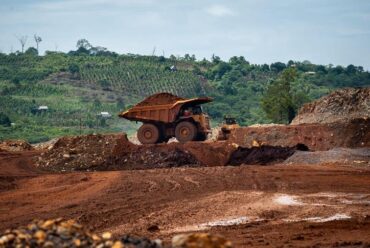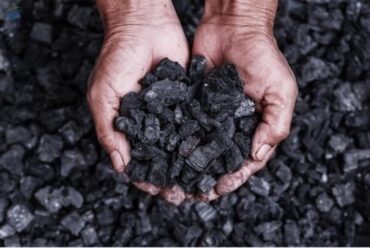The 5 Largest Coal Producers in the World
Coal has long been an important energy resource worldwide. As one of the most abundant fossil fuels, coal is used in various sectors, such as power generation, industrial manufacturing and domestic heating.
However, in the context of climate change and the need for clean energy, the role and ranking of the world’s largest coal producers is an important highlight. This article will explore some of the leading countries in coal production and the factors that influence their position in the global rankings.
THE ROLE OF COAL IN THE ENERGY INDUSTRY
Before we enter the ranking of the largest coal producing producers, it is important to understand the important role coal plays in the energy industry. Coal has long been used as a primary energy source due to its abundant availability and relatively low cost compared to other energy sources. Coal can also be converted into different forms of energy, such as electricity, heat or gas.
FACTORS AFFECTING THE RATING OF THE BIGGEST COAL MANUFACTURERS
Several factors play a role in determining the ranking of the world’s largest coal producers. Let’s take a look at some of the main factors that play an important role in determining a country’s position in this ranking.
1. COAL PRODUCTION
Coal production is one of the main factors in ranking the largest producers. Countries with high coal production tend to occupy the top positions in this ranking.
Coal production is influenced by factors such as the availability of abundant coal reserves, sophisticated mining technology, and supporting infrastructure.
2. COAL RESERVES
A country’s coal reserves also play an important role in determining its ranking as the largest producer. Countries that have large coal reserves have the potential to increase their production in the long term. Abundant coal reserves provide a competitive advantage for coal producers in meeting domestic and export demand.
3. COAL CONSUMPTION
Coal consumption in domestic and international markets also affects the ranking of the largest coal producers. Countries that have a high level of coal consumption generally have a large production to meet their energy needs. High demand can encourage increased coal production and increase the ranking of the largest producers.
5 RANKINGS OF THE BIGGEST COAL PRODUCER IN THE WORLD
Now, let’s take a look at some of the countries that lead in coal production and occupy the top positions in the ranking of the world’s largest coal producing producers.
1. CHINA
China is the world’s largest coal producer. The country has abundant coal reserves and a developed mining infrastructure. China’s coal production is very high and most of it is used to meet the large domestic energy needs. High demand from the industrial and power generation sectors in China has made this country hold the top position in the ranking of the largest coal producers.
2. UNITED STATES OF AMERICA
The United States is also one of the world’s largest coal producers. Although the use of coal in the United States has decreased in recent years, the country still has significant coal reserves and advanced mining technology. United States coal production is widely used for power generation and industry, and is exported to various countries.
3. INDIA
India is a country with a high demand for coal to meet its large domestic energy needs. India’s coal production continues to increase along with rapid economic growth. The country has sizeable coal reserves and continues to invest in mining infrastructure. India is ranked as the second largest coal consumer in the world after China.
4. AUSTRALIA
Australia has enormous coal reserves and is one of the world’s largest coal exporters. Australia’s coal production is mostly exported to countries such as China, India, Japan and South Korea. This country has advanced mining technology and plays an important role in global coal supply.
5. INDONESIA
Indonesia is one of the world’s largest coal producers and is in the spotlight in this ranking. This country has abundant coal reserves and production continues to increase. Good quality Indonesian coal, such as sub-bituminous coal and lignite, is in high demand in the international market. However, factors such as mining infrastructure that still needs to be improved and strict government regulations affect the potential for the development of the coal industry in Indonesia.
FACTORS AFFECTING COAL PRODUCTION IN INDONESIA
There are several factors that affect coal production in Indonesia and play a role in determining the country’s position in the ranking of the largest coal producers. Let’s discuss some of these main factors.
1. QUALITY OF COAL
Coal quality is an important factor affecting coal production in Indonesia. The country has a wide variety of coal, ranging from low quality lignite to high quality bituminous coal. High demand, especially for low quality coal, provides an opportunity for Indonesia to increase coal production and exports.
2. MINING INFRASTRUCTURE
Adequate mining infrastructure is very important in increasing coal production. Good access to mining areas, efficient transportation, and other supporting facilities can facilitate coal extraction and shipping activities. Increased investment in mining infrastructure is the key to optimizing coal production in Indonesia.
3. GOVERNMENT REGULATIONS AND POLICIES
Government regulations and policies have a significant impact on coal production in Indonesia. The government plays an important role in regulating mining permits, protecting the environment, and regulating coal prices and exports. Stable and clear policies can create a conducive environment for the coal industry and encourage increased production.
4. DOMESTIC AND EXPORT DEMAND
Coal demand from both the domestic and export markets is a determining factor in coal production in Indonesia. High domestic demand for domestic energy needs can encourage increased production. Meanwhile, coal exports to countries such as China, India and Japan also have an important role in increasing the country’s production and income.
FUTURE POTENTIAL FOR INDONESIA AS THE BIGGEST COAL PRODUCER
Indonesia has great potential to become the world’s largest coal producer. With abundant coal reserves, continuously improving infrastructure development, and supporting regulations, Indonesia can continue to increase coal production.
In the effort towards clean energy and the transition to more sustainable energy sources, Indonesia also needs to focus on developing renewable energy and diversifying the energy sector.
ENVIRONMENTAL IMPACTS OF THE COAL INDUSTRY
The coal industry also has environmental impacts that need attention. Some of the negative impacts of this industry include greenhouse gas emissions that contribute to climate change, air and water pollution due to the use of coal, and environmental damage such as mining and land excavation.
Increased awareness of the importance of environmental protection has driven efforts to reduce the negative impacts of the coal industry. Several steps that can be taken include the use of cleaner and more efficient technologies in the process of burning coal, improving emission control, and developing renewable energy as an alternative to reduce dependence on coal.
In addition, post-mining land rehabilitation efforts are also important to reduce the ecological impact of coal mining. Forest restoration, land reclamation and development of rehabilitation parks can help restore ecosystems affected by mining activities.
Coal production in Indonesia plays an important role in the ranking of the world’s largest coal producers. In maintaining its position in this ranking, Indonesia needs to continue to increase coal production by considering factors such as coal quality, mining infrastructure, government regulations, as well as domestic and export demand.
However, it is also important for Indonesia to pay attention to the environmental impact of the coal industry. Efforts to reduce greenhouse gas emissions, control air and water pollution, and post-mining land rehabilitation must be a priority in maintaining a balance between energy needs and environmental protection.







